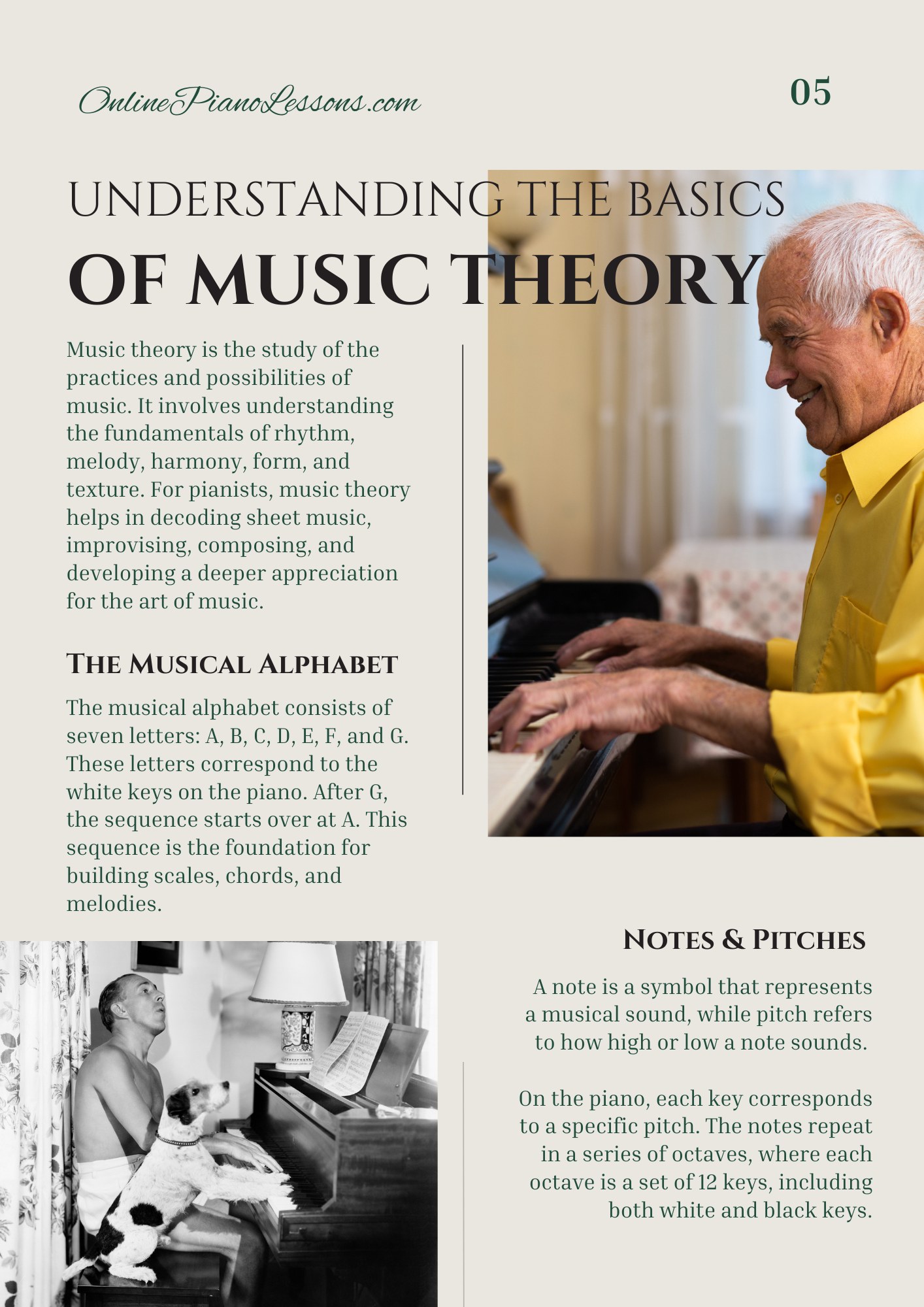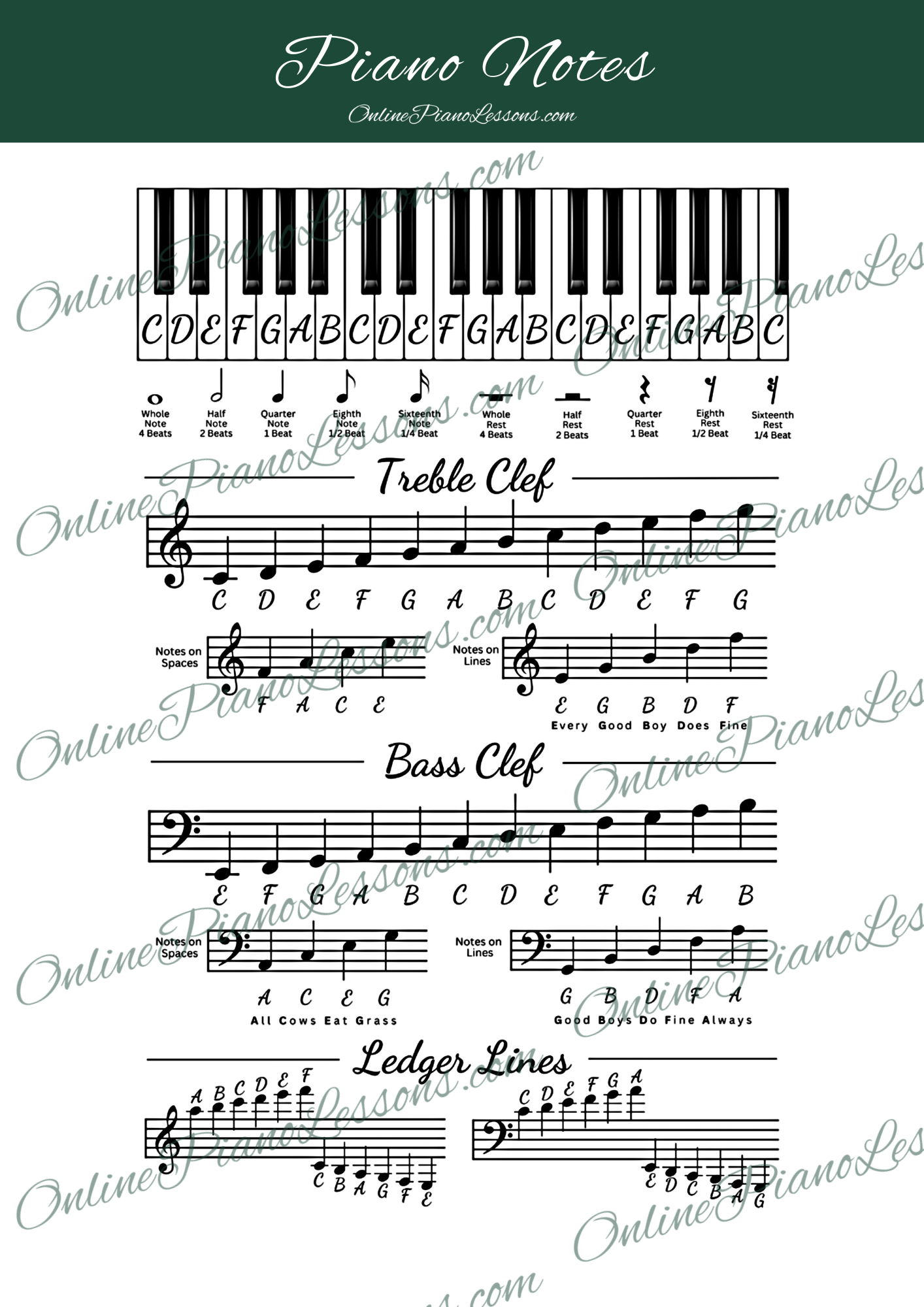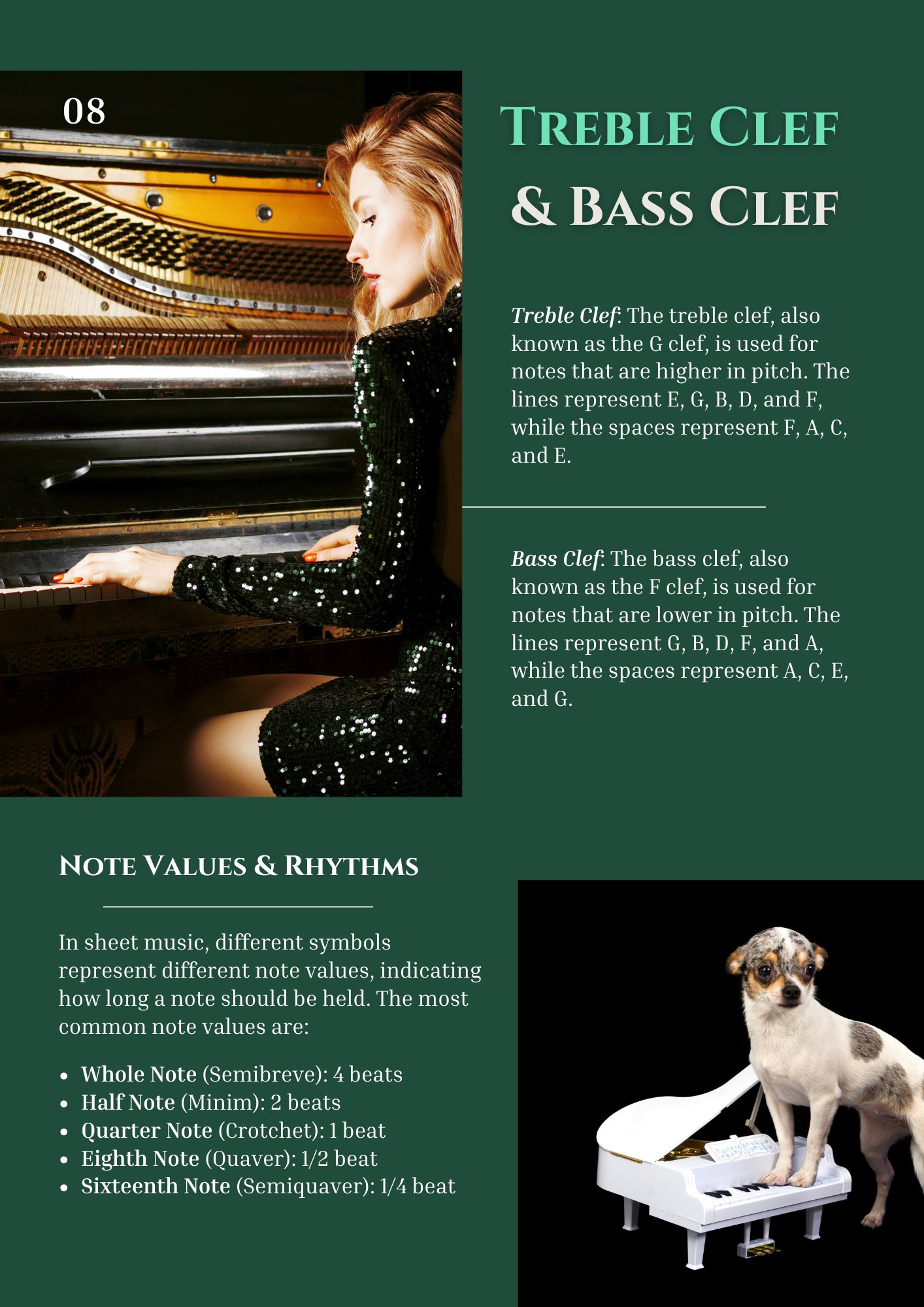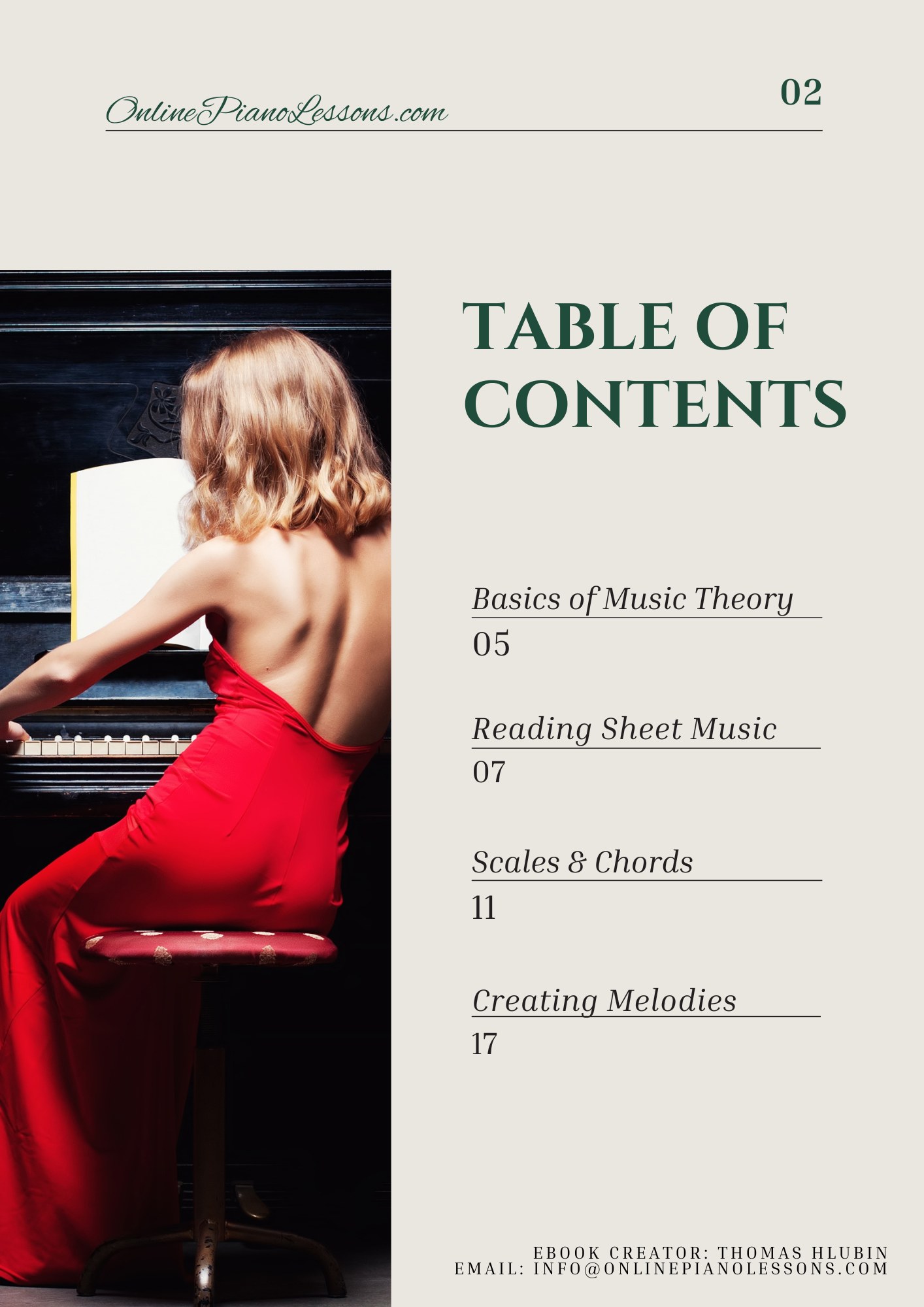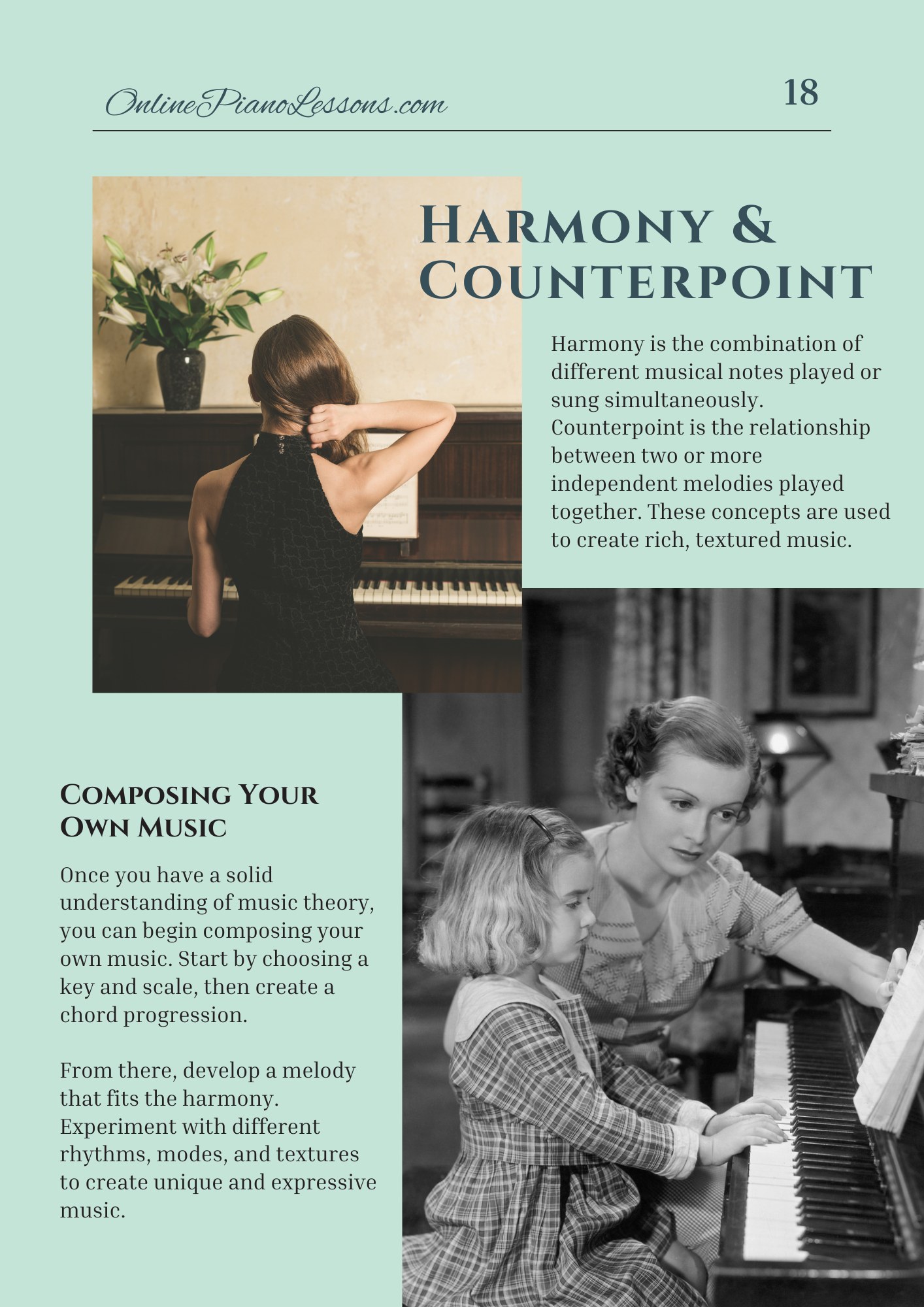The whole tone scale is a compact, hypnotic, and slightly otherworldly scale that creates a floating, dreamlike sound. On the piano, the whole tone scale is an excellent tool for composers, improvisers, and pianists who want to explore unusual sonorities, ambiguous harmony, and shimmering textures. This in-depth guide explains exactly what the whole tone scale is, how it works on the piano, how it sounds, practical fingerings and exercises, common uses, and ways to apply it musically.
What Is The Whole Tone Scale?
The whole tone scale is a six-note scale made entirely of whole-step intervals. Unlike most scales that alternate whole and half steps, the whole tone scale moves by whole steps only (two semitones each). Because of that consistent spacing, the whole tone scale lacks a single, strong tonal center the way major and minor scales do — on the piano, it creates an ambiguous, floating quality.
There are only two distinct whole tone scales on the piano (or any 12-tone keyboard): one starting on C (C — D — E — F♯ — G♯ — A♯ — C) and the other starting on C♯ (C♯ — D♯ — F — G — A — B — C♯). Every transposition of the first set maps onto itself, so you encounter just two unique whole tone collections on the piano.
Why The Whole Tone Scale Sounds Unique On The Piano
Because the whole tone scale has no half-step leading tone and all intervals between adjacent notes are equal, melodies and harmonies built from the whole tone scale don’t push strongly toward resolution. On the piano that produces a dreamy, impressionistic texture used famously by Debussy and (later) by jazz musicians for altered sounds. The equal spacing also means that many triads and augmented chords appear naturally inside the scale — augmented triads are especially prominent — giving the whole tone scale its shimmering, unresolved harmonic character.
Building The Whole Tone Scale On The Piano
To build a whole tone scale on the piano, pick any starting note and move up by whole steps:
Example (C whole tone scale):
C — D — E — F♯ — G♯ — A♯ — C
Example (C♯ whole tone scale):
C♯ — D♯ — F — G — A — B — C♯
Practice both sets so you become familiar with the two whole tone collections on the piano. The patterns are compact and repeat every whole step, so visualizing the layout on the keyboard helps you navigate quickly.
Harmonic Properties And Chords
The whole tone scale contains built-in augmented triads (e.g., C — E — G♯) and dominant chords with raised or ambiguous tensions. On the piano, stacking scale tones often yields augmented or suspended sonorities rather than neat major/minor triads. That’s why composers use whole tone textures to suggest floating tension — the harmony neither resolves nor feels stable in the conventional tonal sense.
Because of the presence of symmetrical intervals, inversions of augmented chords sound very similar. On piano, augmented triads and augmented seventh chords are the natural harmonic vocabulary of the whole tone scale.
What The Whole Tone Scale Sounds Like
On the piano, the whole tone scale typically sounds:
- Dreamy and ethereal: no strong pull to a tonic.
- Ambiguous and floating: melodies don’t settle the way diatonic lines do.
- Tense yet smooth: augmented harmonies create tension without harsh dissonance.
- Impressionistic: ideal for coloristic passages and atmospheric scenes.
When you play whole tone passages on piano, aim for a legato, singing approach at slow to medium tempos if you want the dreamy effect. Faster runs create a brilliant, glittering shimmer that can be very effective as a coloristic flourish.
Practical Fingerings And Pianistic Tips
Because the whole tone scale contains many black-and-white transitions and repeated whole-step patterns, fingering choices should prioritize smooth thumb crossings and evenness.
- For one-octave exercises starting on C (all white/black mix), try right-hand fingering: 1–2–3–1–2–3 and repeat as needed. Adapt as you move into keys with different black-key placements.
- Keep the wrist flexible and use small arm weight for a smooth tone on the piano.
- Practice both legato and staccato articulations to control the scale’s color.
- Play scale fragments in contrary motion (right hand ascending, left hand descending) to practice coordination and to explore the scale’s symmetric properties on the piano.
Because only two whole tone collections exist, practice transposing those two patterns up and down the keyboard until the shapes become second nature.
Exercises To Internalize The Whole Tone Scale On The Piano
- One-Octave Runs: Play the C whole tone scale hands separately, then together. Keep tones even and center your sound.
- Augmented Arpeggios: Extract augmented triads from the scale (C–E–G♯) and practice arpeggios and inversions.
- Chromatic-Like Patterns: Use repeated whole-step sequences (e.g., C–E–G♯, D–F♯–A♯) to create shimmering textures.
- Improv Vamps: Make a two-chord vamp using augmented chords and improvise melodic motifs using the whole tone scale.
- Metric Variations: Practice whole tone runs in triplets, duplets, and cross-rhythms to build rhythmic control on the piano.
Ten minutes of targeted whole tone practice daily will make these sounds feel natural and open new textural possibilities for your playing.
Musical Uses And Contexts
The whole tone scale is widely used where ambiguity and color are desired:
- Impressionist piano music: Debussy and Ravel used whole tone sonorities to paint watery, floating soundscapes.
- Film and game scoring: To produce dreamy atmospheres or uncanny tension on the piano, whole tone textures work beautifully.
- Jazz: Improvisers use whole tone lines over altered dominants to imply raised 5ths or b9/#9 tensions. On piano, whole tone passages can sound modern and harmonically daring.
- Contemporary and experimental music: Composers use whole tone collections for modal or atonal color.
On the piano, whole tone writing is a go-to when you want listeners to feel suspended or disoriented in a pleasurable way.
Common Pitfalls And How To Avoid Them
- Overuse: The whole tone scale is powerful but easy to overuse. Reserve it for moments that benefit from ambiguity.
- Lack of contrast: Pair whole tone passages with diatonic or modal material to create satisfying contrast on the piano.
- Mechanics over music: Don’t practice whole tone runs as mere finger gymnastics — always shape phrases musically.
- Ignoring chords: Augmented and altered chords are the harmonic companions of the whole tone scale; use them to make the scale sound intentional rather than accidental.
Compositional Ideas For The Piano
- Start a piece with a slowly unfolding whole tone motif, then introduce a diatonic theme to establish contrast.
- Use whole tone runs as transitions between sections for a sense of floating movement.
- Layer left-hand whole tone pedal points with right-hand augmented arpeggios to create shimmering textures.
- Use whole tone fragments as “color phrases” inside an otherwise tonal piano piece to inject surprise.
Final Thoughts
The whole tone scale is a compact but powerful addition to any pianist’s toolkit. On the piano it opens doors to shimmering harmonies, augmented sonorities, and ambiguous colors that can be lyrical, eerie, or dazzling depending on how you use them. Learn the two whole tone collections, practice the augmented chords inside them, and experiment with combining whole tone textures with tonal anchors — you’ll discover a new palette of sounds that can transform simple piano ideas into otherworldly moments.
FAQ
What is the whole tone scale?
The whole tone scale is a six-note scale built entirely from whole steps. On the piano it yields only two unique collections and creates a dreamy, ambiguous sound.
How many whole tone scales are there?
On the piano there are just two distinct whole tone scales (the “C” whole tone set and the “C♯” whole tone set), because transpositions by whole steps map the scale onto itself.
What does the whole tone scale sound like on piano?
It sounds ethereal, floating, and ambiguous; often described as impressionistic or dreamlike, with augmented-harmonic colors that don’t resolve strongly.
Is the whole tone scale useful for improvisation on piano?
Yes — especially over altered dominant chords or vamps requiring a non-diatonic, coloristic approach. Jazz pianists use it to outline #5/#11 type tensions.
What chords fit the whole tone scale on piano?
Augmented triads and dominant chords with altered tones (e.g., raised fifths) are natural fits. Many augmented and diminished-sounding voicings arise from the scale.
How should I practice the whole tone scale on piano?
Practice the two whole tone collections, work on augmented arpeggios and sequences, use metronome control, and always incorporate musical phrasing.
Will whole tone passages make my music sound atonal?
Not necessarily. Whole tone passages create ambiguity rather than full atonality; when used deliberately alongside tonal material they add color without abandoning tonality completely.
Which composers used the whole tone scale on piano?
Claude Debussy popularized whole tone textures in piano music, and later composers and jazz musicians adopted whole tone colors for modern harmony.

 Get Full Access (Only $5/mo)
Get Full Access (Only $5/mo)



 I love playing piano, creating new melodies and songs, and further developing my online piano course and making updates/additions to my site OnlinePianoLessons.com!
I love playing piano, creating new melodies and songs, and further developing my online piano course and making updates/additions to my site OnlinePianoLessons.com!  Now that is what I call fun!
Now that is what I call fun!

